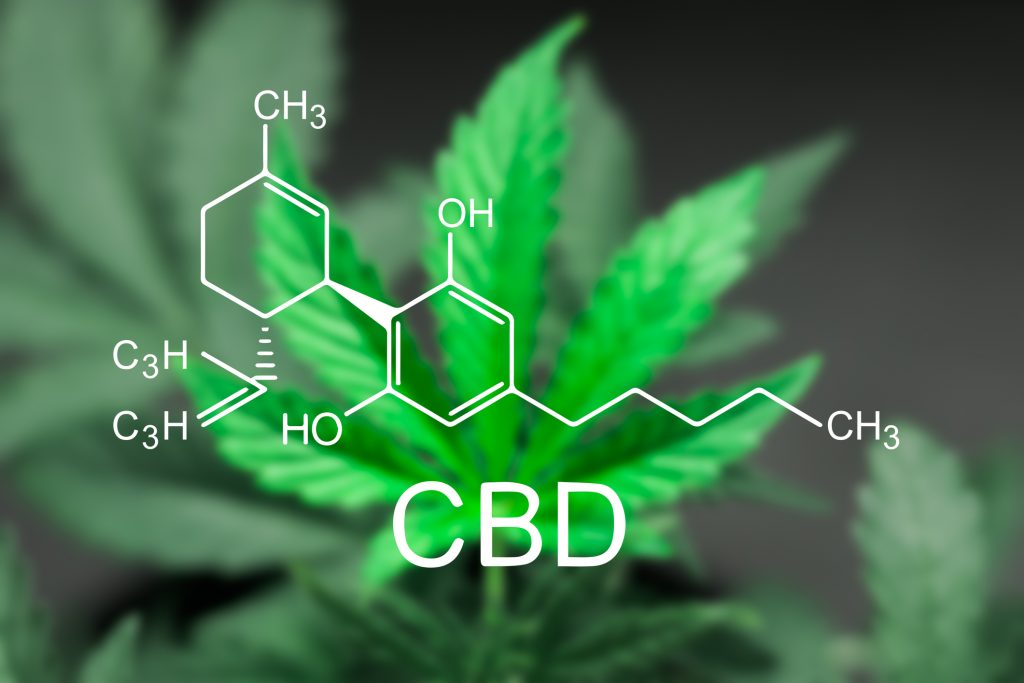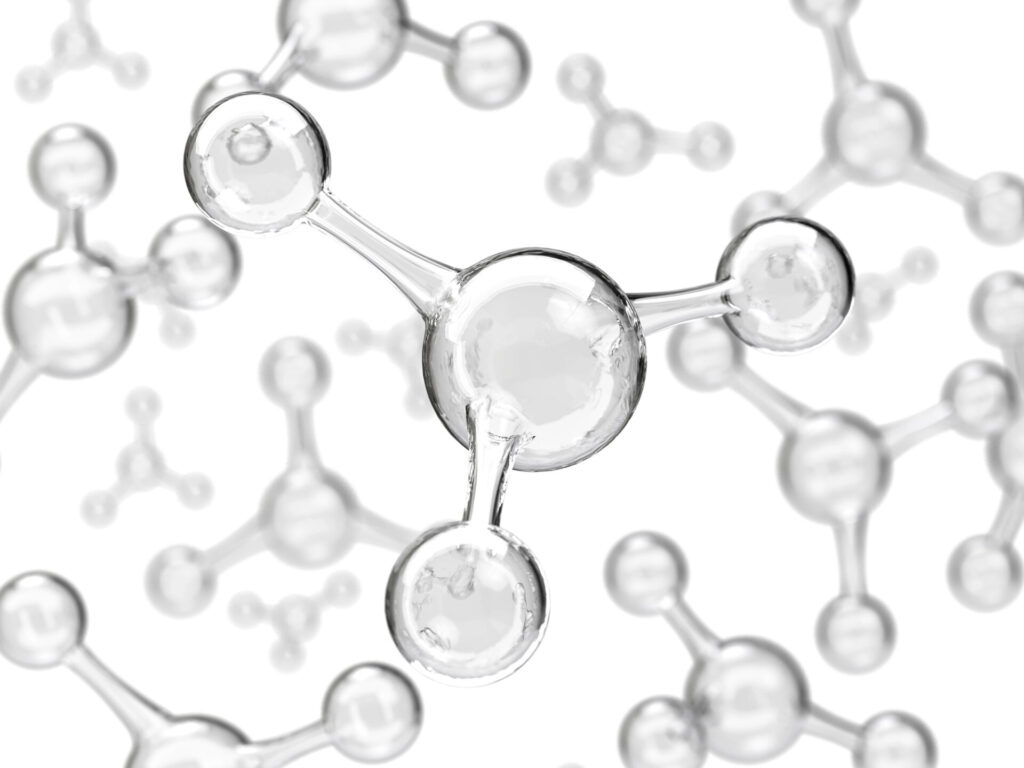The statements mentioned in this content have not been evaluated by the FDA, and are not intended to prevent, diagnosis, or treat any disease. Always work with your personal healthcare provider.
Depression is an all-too-common psychiatric disorder. An estimated 20% of people suffer from depression.1 Regularly feeling sad, empty, or losing interest or no longer taking pleasure in everyday activities (anhedonia) are some symptoms of depression. Not being able to concentrate or make decisions, insomnia, or feeling excessively sleepy during the day are also indications you or a loved one may be depressed.
Depression is also linked to addiction, as many depressed people turn to substance abuse as a way to try to make their bad feelings disappear. As many as 30% to 40% of individuals with a drug addiction also meet the criteria for depression or an anxiety disorder.2
The conventional treatment for depression is to prescribe antidepressant medications. However, many people don’t respond to these drugs or discontinue use due to side effects.3
How the Endocannabinoid System Boosts Mood
The endocannabinoid system is involved in keeping us in a happy state of mind. As a reminder, your body makes endocannabinoids called AEA and 2-AG. These endocannabinoids are part of the endocannabinoid system along with CB1 and CB2 cannabinoid receptors activated by AEA and 2-AG and enzymes responsible for the endocannabinoid’s breakdown. In animal research, a deficiency in endocannabinoids is linked to depression.4 In animal studies of depression and stress, 2-AG brain tissue concentrations and AEA levels are altered.4
A common way for researchers to study depression in rodents is to administer a forced swim test. It has been noted that antidepressant-like substances given to the rodents before the test will cause them to swim longer and harder. The animals not given any antidepressant will often stop making movements beyond those necessary to lift their heads above water. In one of these tests, the endocannabinoid AEA reduced the amount of time mice remained immobile.5
There’s also evidence in humans that when the endocannabinoid system isn’t working properly, it may result in depression. In postmortem studies of alcoholic suicide victims, higher than normal levels of endocannabioids were found in the dorsolateral prefrontal cortex area of the brain.6 The study authors suggested that these increases in endocannabinoid levels may cause emotional discomfort during depression and that alcoholic suicidal patients may have a hyperactive endocannabinoid system. They concluded that the endocannabinoid system, “may be a novel therapeutic target for the treatment of suicidal behavior.”
In addition, clinical trials of untreated depressed patients have observed a rise in serum AEA levels.7 Plus, there’s a link between higher endocannabinoid levels and higher blood pressure levels in depressed women.8 What’s more, female patients with major depression have lower levels of the endocannabinoid 2-AG.7 The clinical conclusion is that balance, sustaining a healthy promoting homeostasis, is essential to best control the impact of dysregulation of the endocannabinoid system as an exacerbating factor in mental health signs and symptoms.
CBD’s Role in Promoting A Happy Mood and Increased Motivation
Studies in animals and limited research in humans—as well as results doctors like myself are seeing in clinical practice—indicate CBD is a natural mood booster. In forced swim tests in mice, CBD caused the mice to swim longer and harder, an indication it was improving their mood and motivation.9 According to the study authors, “The data support a promising therapeutic profile for CBD as a new fast-acting antidepressant drug.”
In other rodent studies, CBD has produced similar results, decreasing immobility in the forced swim test and increasing the animals’ likelihood to explore a maze and novel objects.10,11 This suggests CBD can improve feelings of hopelessness and maintain pleasure felt while participating in daily activities.
Despite reports from many physicians who are giving CBD to depressed patients with good results, human trials using CBD in depression are lacking. However, as I reported in Chapter 3 of this book, there are a number of human studies showing CBD can reduce stress. Ongoing stress is known to trigger depression and CBD’s ability to soothe stressful feelings may be the reason why there are many reports of it being a natural mood booster.
There are many other logical ways in which CBD could improve mood, some of them related to the means by which CBD reduces stress. These have all been demonstrated in rat studies. First, CBD triggers hippocampal neurogenesis, the birth of new neurons in the hippocampus.12 Long-term stress as well as depression can reduce hippocampal neurogenesis, but CBD has a protective effect.13 This all comes back to the endocannabinoid system, as the means by which CBD triggers this neurogenesis depends on there being present high enough levels of the endocannabinoid AEA.14 In patients with minor depression, AEA levels were higher compared with controls, suggesting that AEA is neuroprotective in patients with less severe depression.14
CBD also acts on the serotonin (5-HT1A) receptor.14 Serotonin is a neurotransmitter involved in feelings of well-being and happiness. Plus, in animal research, CBD elevates levels of brain-derived neurotrophic factor (BDNF), which is involved in the survival of nerve cells.9 Low levels of BDNF are associated with major depressive disorder in humans.15
Another way in which CBD increases feelings of well-being is by blocking the enzyme FAAH, which, as I mentioned in Chapter 1, breaks down the endocannabinoid AEA. By blocking FAAH, CBD increases levels of AEA, which is also known as the “bliss molecule” since it promotes feelings of happiness.
CBD and Addictions
CBD is one of the most useful tools I’ve used in my clinical practice in helping patients who suffer from addictions, whether it’s to alcohol, drugs, or cigarettes. As I mentioned earlier in this chapter, people who suffer from addictions often also suffer from depression. And chronic stress can be a trigger for addicts to turn to drugs or alcohol. After a period of withdrawal, the willpower to avoid a relapse in drug use is one of the biggest challenges in the treatment of addiction. CBD’s ability to boost mood and soothe away stress can be extremely beneficial in helping people with addictions avoid drugs, alcohol, and tobacco.
Preclinical studies in animals and human trials have found that CBD reduces cravings. For example, a randomized, double blind placebo controlled study evaluated the use of cannabidiol (CBD) or a placebo in 24 smokers who wished to stop smoking.16 Half of the participants used an inhaler of CBD while the other half used a placebo whenever they felt the urge to smoke over the course of a week. There were no differences in the number of cigarettes smoked in smokers using the placebo inhaler. However, subjects using the CBD inhaler smoked approximately 40% fewer cigarettes.
CBD’s ability to reduce nicotine cravings is likely accomplished through its interactions with the endocannabinoid system, specifically its ability to block the enzyme FAAH and increase levels of the “bliss molecule” endocannabinoid AEA. Studies have shown that blocking FAAH stops nicotine cravings, as well as nicotine’s ability to produce dopamine and therefore its pleasurable effects.17,18 By blocking FAAH, CBD also reduces anxiety during nicotine withdrawal.19
CBD and Opioid Addiction
In Chapter 2, I briefly covered CBD’s possible role in solving the opioid addiction crisis. Opioid painkillers are highly addictive and lead to fatal overdoses. As I discussed in Chapter 2, every day, 128 people in the United States die from an opioid overdose. Receptors in the endocannabinoid system interact with opioid receptors.20 CBD works at least in part through the endocannabinoid system, so it makes sense that it has a role to play in stopping opioid addiction.
Withdrawal symptoms of drug use may include such symptoms as sleep disturbances, anxiety, unease or dissatisfaction (dysphoria), and fatigue. People withdrawing from drugs also are unable to handle stress and have recurrent intense cravings for the drug, which can last for months or years and lead to relapse. Animal studies show CBD can stop opioid-drug seeking behavior and reduce withdrawal symptoms. For example, in one study, rats were able to avoid using heroin, an opioid drug, similar to the way that humans with addictions must exercise self-control to avoid relapsing.21
In addicts there are emotional events and triggers that lead to relapses and the researchers exposed the animals to similar triggers.21 Compared to a placebo control, CBD did not change the rats’ self-administration of heroin nor overall drug-seeking behavior. However, it reduced heroin-seeking behavior when the rats were exposed to a specific trigger cue. CBD stopped the animals from seeking out heroin even 24 hours and two weeks after the rats were given CBD.
In other rodent research, CBD and another phytocannabinoid cannabinol (CBN) were able to reduce withdrawal symptoms in animals addicted to morphine.22,23
Emerging evidence in humans has found similar results. In a double-blind study of heroin-addicted people who had not used the drug for seven days, participants were randomized to receive three consecutive days of CBD or placebo.24 The study found that a single administration of CBD reduced drug cravings caused by typical triggers immediately after CBD use, 24 hours later, and even a week after the last dose was given. CBD also reduced anxiety while withdrawing from the heroin. The scientists believe their findings suggest that CBD is likely to prevent a relapse.
A case study nicely demonstrates how CBD can be used in people with both depression and addictions.25 The case study was of a young patient with multiple substance use disorder including cannabis, cocaine, and ecstasy combined with severe depression, social phobia, and narcissistic personality disorder. After antidepressant medications didn’t work, the researchers administered CBD capsules in increasing dosages (100 mg to 600 mg over eight weeks). CBD was safe and well tolerated. What’s more, after treatment with CBD, the patient’s depression improved as well as anxiety symptoms such as phobias, paranoia, and dissociation (feeling disconnected from thoughts, feelings, and memories). The patient stopped using addictive drugs including THC (marijuana) without showing withdrawal symptoms.
CBD’s Role in Cocaine Addiction and Alcoholism
In some rodent studies, CBD hasn’t been as beneficial in cocaine withdrawal and relapse.26,27 However, in other rodent studies, it has reduced intake of cocaine and blocked the liver toxicity and seizures caused by cocaine.28,29 For alcohol withdrawal and long-term reduction of cravings, many doctors report it is effective, especially if combined with a full protocol of supplements that can help with withdrawal. Furthermore, in rodent studies, CBD reduced alcohol-seeking behavior that occurs after common triggers and stress.30 It also blocked convulsions caused by alcohol withdrawal.30 In addition, in both rodent and cell culture studies, CBD was neuroprotective after exposure to alcohol and reduced liver toxicity caused by alcohol.30
Clinical Considerations
It is essential to address nutritional, metabolic, endocrine, and lifestyle variables when assisting individuals with mood and addiction disorders. One or more epigenetic factors can serve as impediments to successfully addressing the underlying physiological susceptibilities that have yielded the clinical presentation of altered neurochemistry.
References
- Scherma M, Masia P, Deidda M, Fratta W, Tanda G, Fadda P. New Perspectives on the Use of Cannabis in the Treatment of Psychiatric Disorders. Medicines (Basel). 2018;5(4).
- Conway KP, Compton W, Stinson FS, Grant BF. Lifetime comorbidity of DSM-IV mood and anxiety disorders and specific drug use disorders: results from the National Epidemiologic Survey on Alcohol and Related Conditions. J Clin Psychiatry. 2006;67(2):247-257.
- Han MH, Nestler EJ. Neural Substrates of Depression and Resilience. Neurotherapeutics. 2017;14(3):677-686.
- Smaga I, Bystrowska B, Gawliński D, Przegaliński E, Filip M. The endocannabinoid/endovanilloid system and depression. Curr Neuropharmacol. 2014;12(5):462-474.
- Umathe SN, Manna SS, Jain NS. Involvement of endocannabinoids in antidepressant and anti-compulsive effect of fluoxetine in mice. Behav Brain Res. 2011;223(1):125-134.
- Vinod KY, Arango V, Xie S, et al. Elevated levels of endocannabinoids and CB1 receptor-mediated G-protein signaling in the prefrontal cortex of alcoholic suicide victims. Biol Psychiatry. 2005;57(5):480-486.
- Hill MN, Miller GE, Ho WS, Gorzalka BB, Hillard CJ. Serum endocannabinoid content is altered in females with depressive disorders: a preliminary report. Pharmacopsychiatry. 2008;41(2):48-53.
- Ho WS, Hill MN, Miller GE, Gorzalka BB, Hillard CJ. Serum contents of endocannabinoids are correlated with blood pressure in depressed women. Lipids Health Dis. 2012;11:32.
- Sales AJ, Fogaça MV, Sartim AG, et al. Cannabidiol Induces Rapid and Sustained Antidepressant-Like Effects Through Increased BDNF Signaling and Synaptogenesis in the Prefrontal Cortex. Mol Neurobiol. 2019;56(2):1070-1081.
- Shbiro L, Hen-Shoval D, Hazut N, et al. Effects of cannabidiol in males and females in two different rat models of depression. Physiol Behav. 2019;201:59-63.
- Shoval G, Shbiro L, Hershkovitz L, et al. Prohedonic Effect of Cannabidiol in a Rat Model of Depression. Neuropsychobiology. 2016;73(2):123-129.
- Campos AC, Fogaça MV, Scarante FF, et al. Plastic and Neuroprotective Mechanisms Involved in the Therapeutic Effects of Cannabidiol in Psychiatric Disorders. Front Pharmacol. 2017;8:269.
- Campos AC, Ortega Z, Palazuelos J, et al. The anxiolytic effect of cannabidiol on chronically stressed mice depends on hippocampal neurogenesis: involvement of the endocannabinoid system. Int J Neuropsychopharmacol. 2013;16(6):1407-1419.
- Zlebnik NE, Cheer JF. Beyond the CB1 Receptor: Is Cannabidiol the Answer for Disorders of Motivation? Annu Rev Neurosci. 2016;39:1-17.
- Kerling A, Kück M, Tegtbur U, et al. Exercise increases serum brain-derived neurotrophic factor in patients with major depressive disorder. J Affect Disord. 2017;215:152-155.
- Morgan CJ, Das RK, Joye A, Curran HV, Kamboj SK. Cannabidiol reduces cigarette consumption in tobacco smokers: preliminary findings. Addict Behav. 2013;38(9):2433-2436.
- Forget B, Coen KM, Le Foll B. Inhibition of fatty acid amide hydrolase reduces reinstatement of nicotine seeking but not break point for nicotine self-administration–comparison with CB(1) receptor blockade. Psychopharmacology (Berl). 2009;205(4):613-624.
- Scherma M, Panlilio LV, Fadda P, et al. Inhibition of anandamide hydrolysis by cyclohexyl carbamic acid 3′-carbamoyl-3-yl ester (URB597) reverses abuse-related behavioral and neurochemical effects of nicotine in rats. J Pharmacol Exp Ther. 2008;327(2):482-490.
- Cippitelli A, Astarita G, Duranti A, et al. Endocannabinoid regulation of acute and protracted nicotine withdrawal: effect of FAAH inhibition. PLoS One. 2011;6(11):e28142.
- Manzanares J, Julian M, Carrascosa A. Role of the cannabinoid system in pain control and therapeutic implications for the management of acute and chronic pain episodes. Curr Neuropharmacol. 2006;4(3):239-257.
- Ren Y, Whittard J, Higuera-Matas A, Morris CV, Hurd YL. Cannabidiol, a nonpsychotropic component of cannabis, inhibits cue-induced heroin seeking and normalizes discrete mesolimbic neuronal disturbances. J Neurosci. 2009;29(47):14764-14769.
- Bhargava HN. Effect of some cannabinoids on naloxone-precipitated abstinence in morphine-dependent mice. Psychopharmacology (Berl). 1976;49(3):267-270.
- Hine B, Torrelio M, Gershon S. Differential effect of cannabinol and cannabidiol on THC-induced responses during abstinence in morphine-dependent rats. Res Commun Chem Pathol Pharmacol. 1975;12(1):185-188.
- Hurd YL, Yoon M, Manini AF, et al. Early Phase in the Development of Cannabidiol as a Treatment for Addiction: Opioid Relapse Takes Initial Center Stage. Neurotherapeutics. 2015;12(4):807-815.
- Laczkovics C, Kothgassner OD, Felnhofer A, Klier CM. Cannabidiol treatment in an adolescent with multiple substance abuse, social anxiety and depression. Neuropsychiatr. 2020.
- Parker LA, Burton P, Sorge RE, Yakiwchuk C, Mechoulam R. Effect of low doses of delta9-tetrahydrocannabinol and cannabidiol on the extinction of cocaine-induced and amphetamine-induced conditioned place preference learning in rats. Psychopharmacology (Berl). 2004;175(3):360-366.
- Mahmud A, Gallant S, Sedki F, D’Cunha T, Shalev U. Effects of an acute cannabidiol treatment on cocaine self-administration and cue-induced cocaine seeking in male rats. J Psychopharmacol. 2017;31(1):96-104.
- Luján M, Castro-Zavala A, Alegre-Zurano L, Valverde O. Repeated Cannabidiol treatment reduces cocaine intake and modulates neural proliferation and CB1R expression in the mouse hippocampus. Neuropharmacology. 2018;143:163-175.
- Vilela LR, Gomides LF, David BA, et al. Cannabidiol rescues acute hepatic toxicity and seizure induced by cocaine. Mediators Inflamm. 2015;2015:523418.
- Turna J, Syan SK, Frey BN, et al. Cannabidiol as a Novel Candidate Alcohol Use Disorder Pharmacotherapy: A Systematic Review. Alcohol Clin Exp Res. 2019;43(4):550-563.







